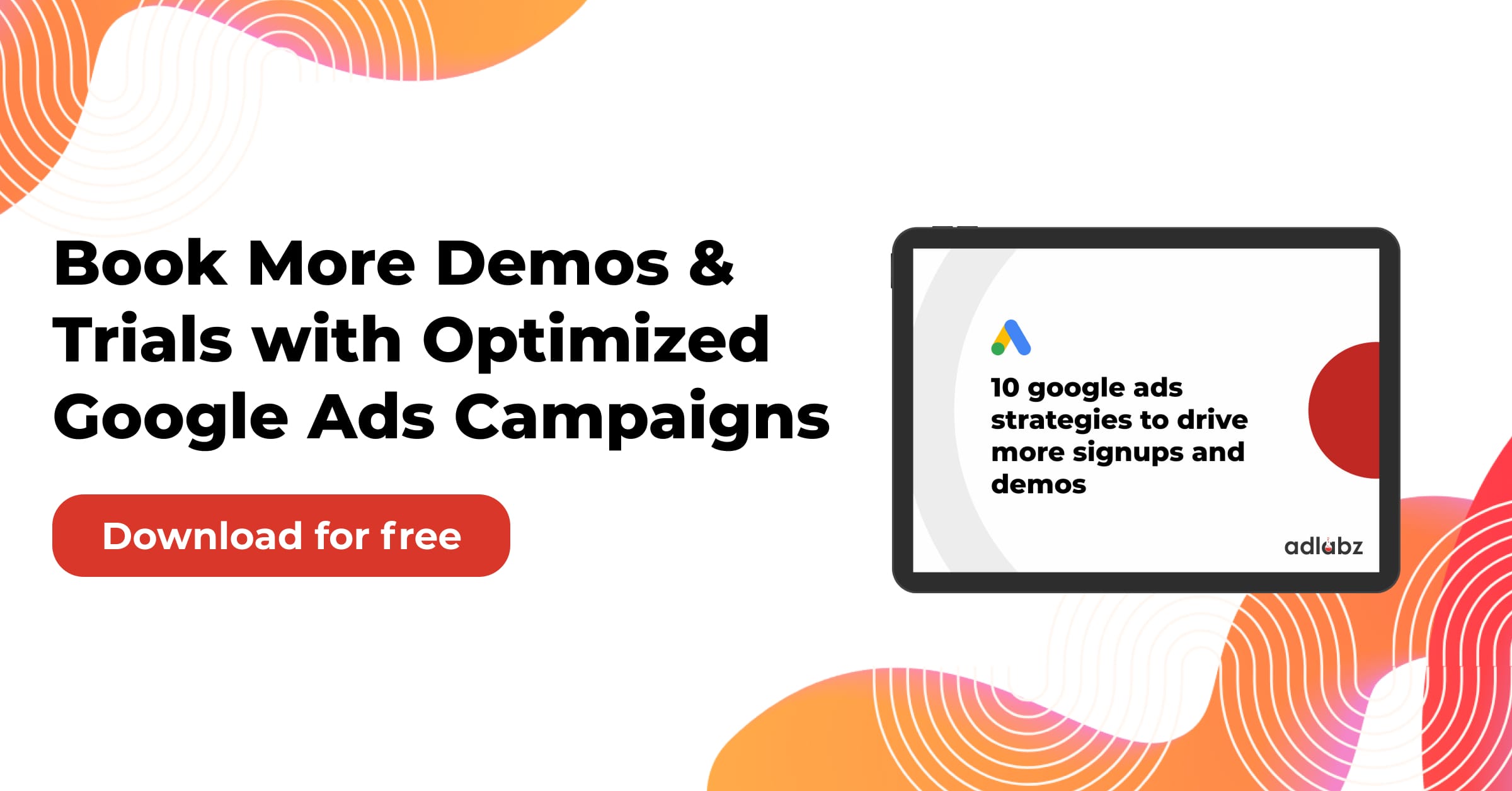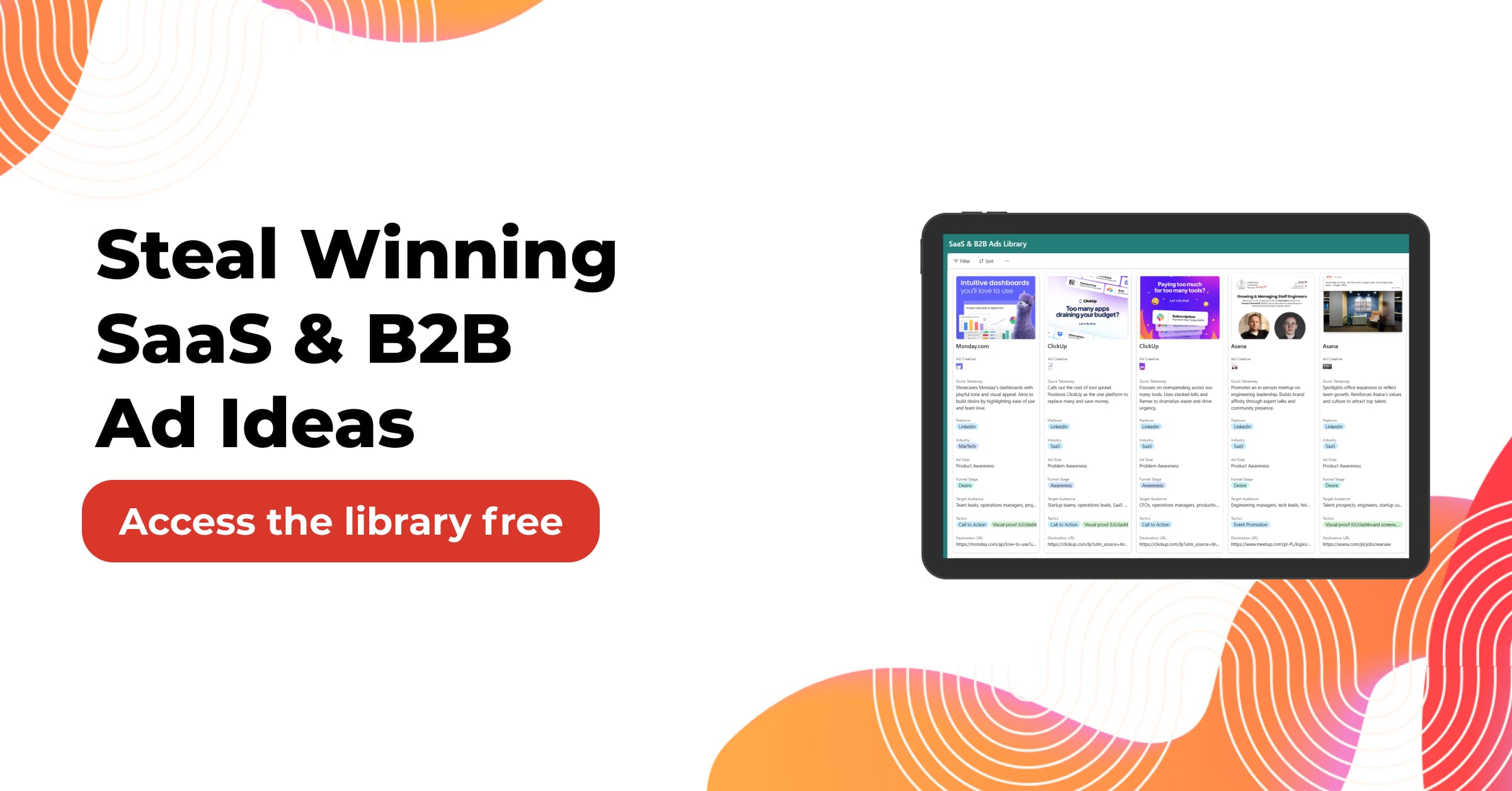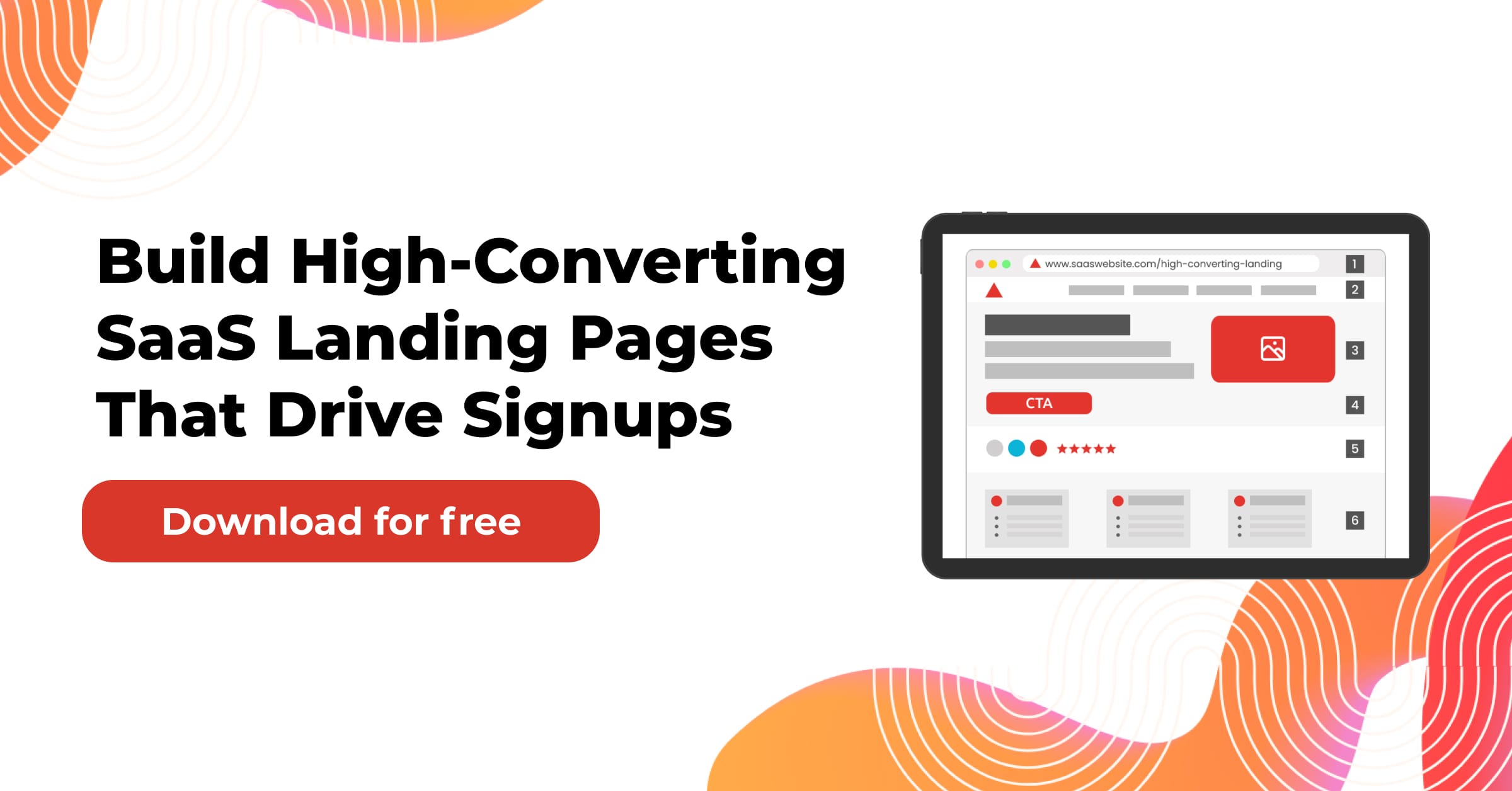The freemium SaaS business model once revolutionized how software products reached users. Offer something valuable for free, and upsell users over time—it was a game-changer for companies like Dropbox, Slack, and Evernote.
But in 2025, many SaaS founders and marketers are asking: Is this model still effective, or has it quietly outlived its usefulness?
This blog explores whether freemium is dying—and what to do instead if you’re building a scalable SaaS business.
Table of Contents
What Made the Freemium Model So Successful in the Past?
Freemium was the default go-to-market strategy for SaaS companies in the 2010s because:
- It reduced friction to acquire users.
- It allowed product virality through team or document sharing.
- It collected valuable usage data before monetization.
- It created brand awareness with mass adoption.
Freemium was particularly effective when infrastructure was cheap and ad channels weren’t saturated. But those advantages are fading.
How Freemium Impacts SaaS Economics
| Metric | Freemium SaaS Model | Paid Trial Model |
|---|---|---|
| CAC | Low for free, high for paid | Moderate |
| LTV | Often low | Higher |
| Payback Period | 12–18 months | 6–9 months |
| Revenue Predictability | Low | High |
| Support Load | High (non-payers) | Focused (payers) |
Freemium can distort your unit economics. You acquire 10,000 users, but only 100 convert. Meanwhile, 9,900 are consuming infrastructure, product, and support.
Why Is Freemium Struggling in 2025?
Freemium’s efficiency declines when:
- Competition increases: users have more options.
- Expectations rise: users expect advanced features for free.
- Ad spend grows: CAC increases even for free users.
- Conversion lag: users get value without paying.
A massive user base doesn’t equal revenue unless there’s a clear, proven upgrade path.
Freemium vs Free Trial: Which is Better for B2B SaaS?
| Factor | Freemium | Free Trial |
|---|---|---|
| Access | Limited | Full |
| Urgency to Convert | Low | High (time-driven) |
| Retention Focus | Long-tail | Front-loaded |
| Monetization Speed | Slow | Fast |
B2B users are often evaluating software for teams, processes, or integration—not just poking around. A free trial gives them the full experience and sets expectations.
What Is a Reverse Trial—and Why Is It the New Favorite?
A reverse trial gives new users full product access temporarily. After the trial ends, they’re downgraded to a freemium tier unless they upgrade.
Benefits:
- Immediate product value exposure
- Higher upgrade urgency
- Keeps users engaged even after the trial ends
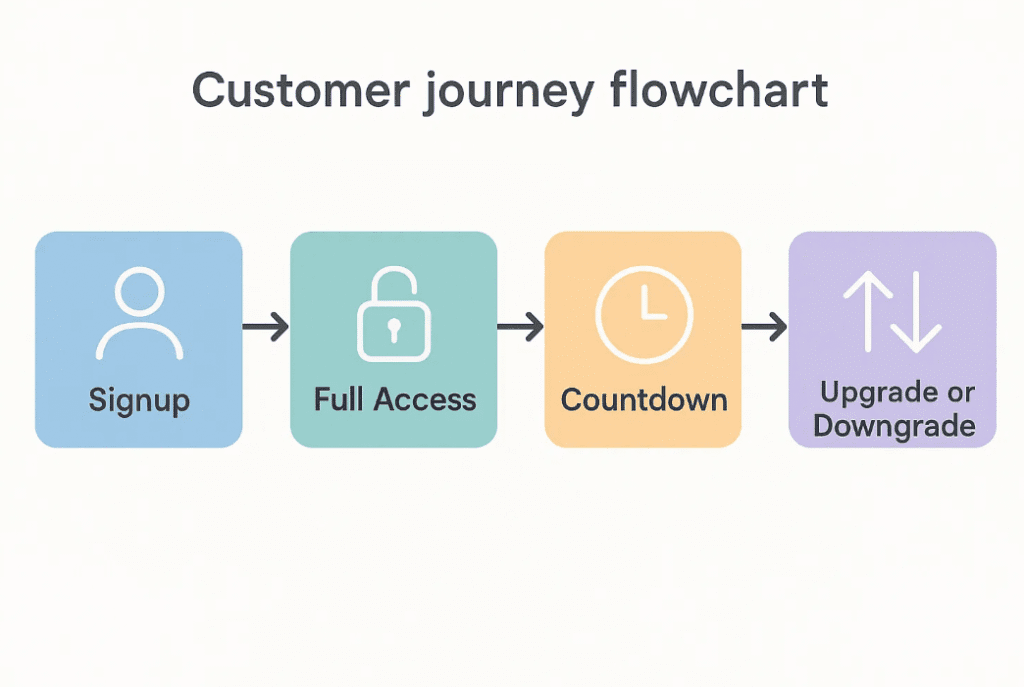
Freemium vs Product-Led Growth: Are They the Same?
No. Product-led growth (PLG) means the product drives user acquisition, activation, and expansion. Freemium is one PLG strategy, but not the only one.
PLG without freemium:
- Time-based trials
- Pay-as-you-go pricing
- Interactive demos
- Usage-based pricing (UBP)
Dropbox started with freemium PLG. Datadog uses UBP PLG. Both are PLG—but with different business models.
Freemium Pitfalls: Why Some SaaS Startups Fail to Monetize
Here are the most common reasons freemium fails:
| Mistake | Consequence |
|---|---|
| Giving away too much | No reason to upgrade |
| No urgency to convert | Users stay on free forever |
| Poor onboarding | Users never reach value |
| Complex pricing | Confusion → churn |
| No usage limits | Infrastructure overload |
Freemium only works if it’s deliberately designed for conversion, not just growth.
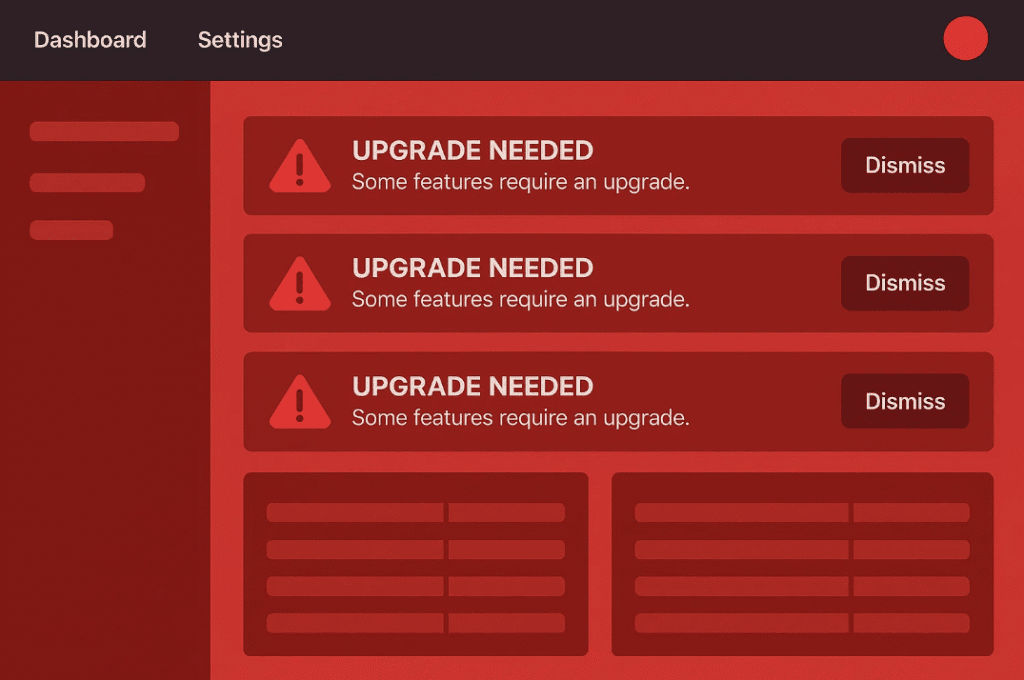
Real Case Study: Ahrefs Killed Freemium—Here’s What Happened
Ahrefs used to offer free tools. In 2023, they removed their freemium tier and launched a $7 trial for full access.
Result:
- Reduced support requests
- Attracted serious users only
- Boosted MRR from more qualified leads
It was controversial, but it worked.
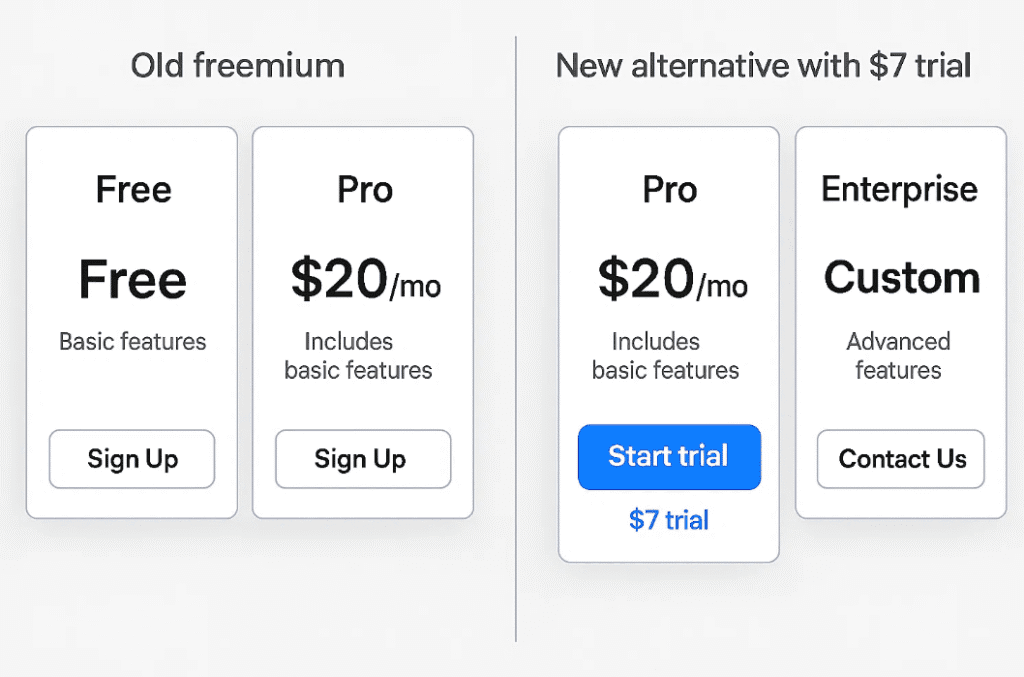
How to Move Away from Freemium Without Losing Users
- Announce it early – Explain the reason and offer incentives.
- Grandfather loyal free users – Reward those who’ve stuck around.
- Bundle trial with onboarding help – Increase perceived value.
- Offer “starter” plan – A paid plan that’s still affordable.
The Future of Freemium: AI, Micro-SaaS & New Pricing Models
With AI tools, usage-based pricing, and pay-as-you-scale plans, the freemium model must evolve.
Emerging Trends:
- Micro-subscriptions: Pay $1/week for AI credits
- Freemium with Ads: Monetize via sponsorships (see Notion templates)
- Smart paywalls: AI detects power users and prompts upgrade
- Hybrid plans: Limited free + flexible usage-based tiers
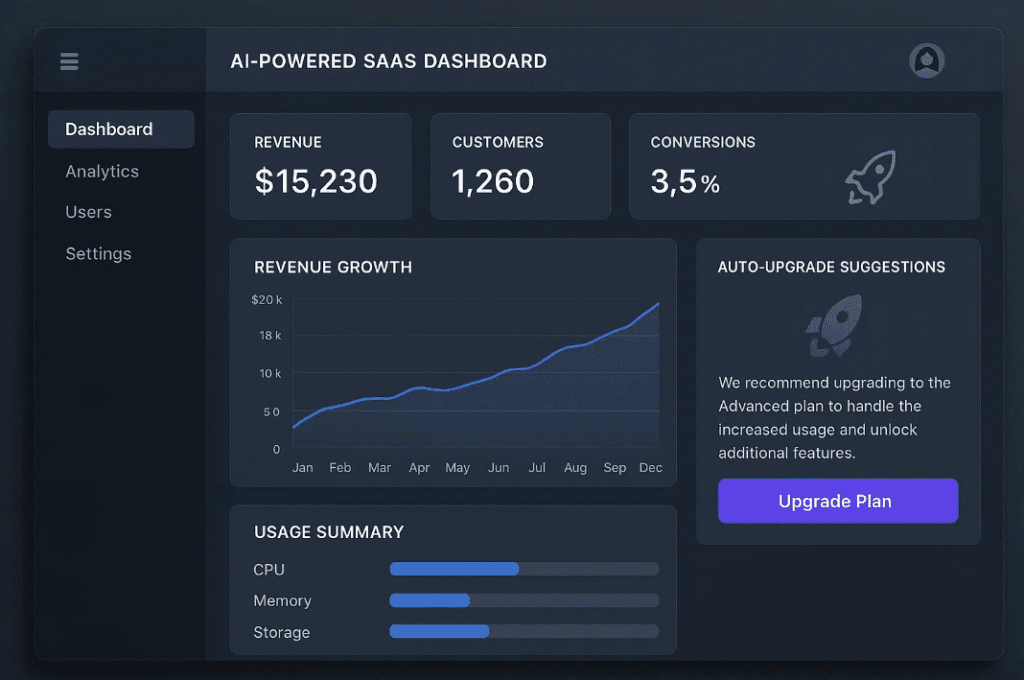
Bonus Table: Which Business Model is Right for You?
| Business Model | Best For | Risk |
|---|---|---|
| Freemium | Viral, simple tools | Monetization delay |
| Free Trial | Feature-rich B2B SaaS | High CAC |
| Reverse Trial | Product-led teams | Needs clear downgrade logic |
| Usage-Based Pricing | Developer tools, AI, infrastructure | Variable revenue |
| Paid Demo Access | Enterprise products | High touch required |
What SaaS Founders Miss About Freemium Models
While much has been written about freemium’s strengths and weaknesses, there’s a deeper layer of nuance that’s often overlooked, especially by early-stage SaaS founders trying to emulate the giants.
Let’s go beyond the surface and explore new perspectives.
Why Freemium Fails as a Fundraising Strategy
Many startups use freemium to boost vanity metrics—user signups, daily active users, app installs—hoping these numbers impress VCs.
But most investors in 2025 are focused on efficiency, not just volume.
Here’s what modern VCs ask:
- What’s your free-to-play conversion rate?
- What’s your blended CAC, including free-user support?
- Are free users generating product-led referrals?
- How soon do they hit paywalls, and do they convert?
If you can’t tie free users to revenue or growth loops, your freemium metrics won’t help in a funding round.
Should You Ever Use Freemium for Enterprise SaaS?
The short answer: rarely.
Enterprise buyers have different expectations:
- Dedicated support
- Custom contracts
- SLAs and uptime guarantees
- Security and compliance documentation
Freemium doesn’t address any of these. Instead, it might cheapen your perceived value and confuse your sales cycle.
Instead, enterprise SaaS should use:
- Lead capture demos
- Interactive product tours
- White-glove onboarding with sandbox access
Psychological Pricing Traps in Freemium
Freemium isn’t just a business model—it’s a psychological game.
Here’s what founders often overlook:
1. Anchoring Bias
If users anchor on your free plan as the “normal” experience, every upgrade feels like a penalty, not a benefit.
2. Choice Paralysis
If your pricing page has too many tiers, users stick with the free tier to avoid making the wrong decision.
3. Sunk Cost Fallacy
If users spend months on a free tier without converting, they may churn rather than commit, because they assume they’ll need to learn the tool all over again.
What Are Smart “Free Forever” Use Cases?
Some companies use freemium strategically, not to drive direct upgrades, but to:
- Build developer goodwill (e.g., free API sandbox)
- Drive SEO via public user content (e.g., free public Notion pages)
- Generate UGC for virality (e.g., Canva templates or Figma plugins)
- Feed top-of-funnel brand exposure (e.g., Zapier integrations)
This ecosystem freemium works if it’s part of a broader GTM motion, not the revenue engine.

What Happens When Freemium Is Your Only Strategy?
Many SaaS founders get trapped in the freemium loop:
- Launch a free tier to get traction.
- Delay monetization to focus on growth.
- Realize the free users aren’t converting.
- Panic → add more free features to boost usage.
- Burn cash without scalable revenue.
This pattern is especially dangerous if you don’t design for monetization from the beginning.
How Can You Build a Freemium Plan That Converts?
If you must use freemium, structure it with clear constraints that push users toward value (and eventually, payment):
| Component | Best Practice Example |
|---|---|
| Feature limits | “Free plan includes 3 projects, 1 teammate” |
| Usage caps | “Free designs include watermark branding.” |
| Watermarks | “Free designs include watermark branding.” |
| Support access | “Email-only support for free users” |
| Upgrade CTAs | “Unlock X by upgrading now” prompts in-app |
The freemium experience should feel functional but incomplete—a taste, not the whole meal.

How To Track the Right Metrics for a Freemium Funnel
It’s not enough to track signups. You need to go deeper into behavior.
Key Metrics:
- Activation Rate: % of users who complete a key value task (e.g., invite a team member, publish a report).
- Time-to-Value: How quickly new users get utility from your product.
- Feature Usage: Which features correlate most with upgrades?
- Free-to-Paid Ratio: How many free users convert monthly?
- Support Cost per Free User: Are you burning bandwidth on non-revenue accounts?
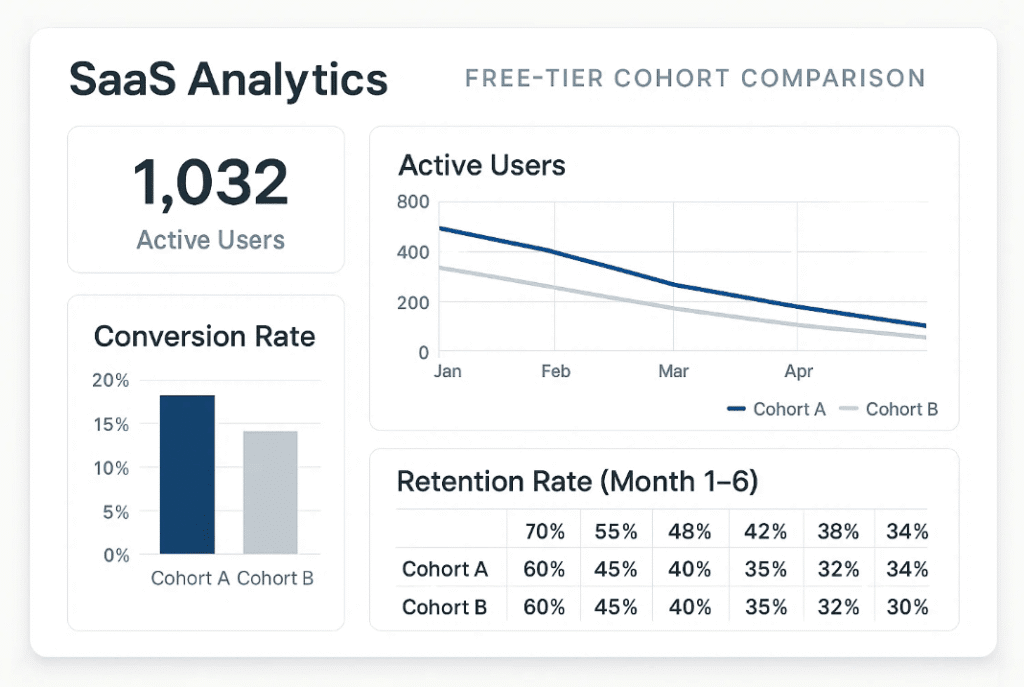
What to Do If You Already Have Too Many Free Users?
Here’s how to clean up a bloated freemium base without alienating loyal users:
- Email inactive accounts with a reactivation nudge.
- Sunset old free plans and migrate users to the limited new ones.
- Introduce fair usage policies to avoid abuse.
- Offer time-limited free upgrades as a conversion test.
- Segment power users and assign sales reps to convert them.
You don’t have to kill freemium cold turkey—but you must bring it under control.

Why Founders Get Emotionally Attached to Freemium
Freemium often becomes a badge of pride:
- “We have 100,000 users!”
- “We’re open and user-friendly!”
- “Our growth is organic!”
But unless you’re monetizing usage, your product is essentially a public good.
You must ask: Are we building a business or a popular free tool?
Sometimes, dropping freemium is the bravest—and smartest—business decision you can make.
Wrapping Up: What Should You Do Now?
Freemium isn’t dead. But unstructured, unstrategic freemium is dying—and that’s a good thing.
If you’re a founder or marketer:
- Treat freemium like a marketing tactic, not your entire business model.
- Test reverse trials, usage-based pricing, and low-cost starter plans.
- Monitor metrics that go beyond signups.
- Build for conversions from Day 1.
Your free plan should serve your growth funnel, not sabotage your business.
You might also be interested:



